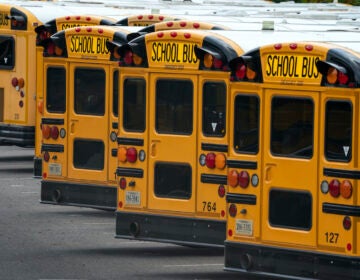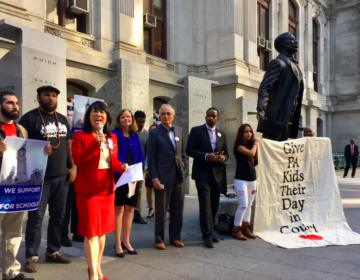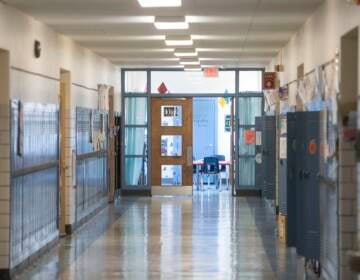Ex-Pa. Education official: Student achievement gap won’t be closed without funding changes
The state’s former deputy secretary of K-12 education took the stand in a long-awaited trial over Pennsylvania’s system for funding public education.
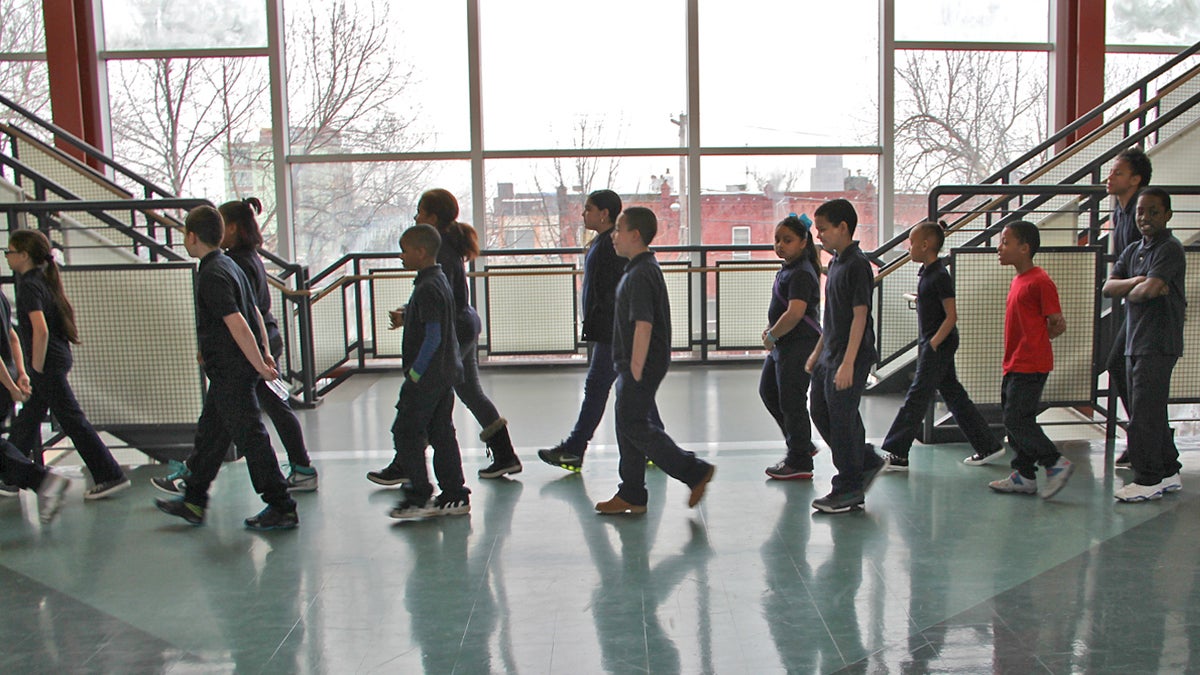
Students change classes at Julia de Burgos Elementary School in Philadelphia, Pa. (Emma Lee/WHYY)
Wide achievement gaps divide Pennsylvania students, and school funding is a “fundamental root cause” of the disparities. That was the central argument of a former state education official during three days of testimony in a landmark trial over Pennsylvania’s system for funding public education.
“Funding is a very important factor for improving outcomes,” said Matthew Stem, who served as Pennsylvania’s deputy secretary of K-12 education for six years before stepping down in June. “I think it’s very, very unlikely that Pennsylvania will be able to close the achievement gaps that we’ve seen for decades without additional funding, particularly for schools with high percentages of students in poverty.”
Stem testified during the second week of the long-awaited trial, which pits six school districts, several parents, and two statewide groups against state leaders. The plaintiffs say Pennsylvania is violating its own constitution by severely under-funding public education and failing to close spending gaps between poor and wealthy school districts.
On the stand, Stem ran through a number of measures the state uses to determine how students are faring, from standardized test scores to graduation rates. By and large, he said, low-income students and students of color are underperforming compared to their peers.
Only 37% of Black students scored proficient or advanced in English language arts in 2018-19 compared to 71% of white students — a 34% performance gap.
The gap was even higher when it came to math. Eighteen percent of Black students achieved proficient or advanced scores, a full 37 percentage points lower than their white peers.
Students classified as “economically disadvantaged” were also less likely to reach proficiency. Less than half scored proficient or advanced in English language arts and 29% in math, about 15 and 16 percentage points lower than the rate for all students, respectively.
Stem also pointed to disparities in graduation rates, noting that 76% of Black students graduated high school in four years in 2020, compared to 91% of white students.
And he said that, when it comes to a national standardized test known as the “Nation’s Report Card,” Pennsylvania has some of the largest performance gaps in the country, particularly when it comes to gaps between Hispanic and white students.
Inequities show up in different ways
The former deputy education secretary confirmed that, in 2015, only 58 Black students and 36 Hispanic or Latino students took the AP Computer Science exam — numbers he said were unacceptable. (He also noted that the overall number of Pennsylvania students who took the exam that year, just under 1,600, was too low to “meet the needs that our workforce is demonstrating.”)
“There is an urgent need to ensure that our school systems are providing the conditions for students to be successful,” Stem said.
The inequities show up in many ways. Stem noted that students from low-wealth districts — and in particular, students of color in those districts — are nearly twice as likely to be taught by inexperienced teachers, with less than three years under their belts, or “out of field” teachers, who haven’t been trained in the grade or subject they’re teaching.
The coronavirus pandemic also exposed the effects of funding gaps throughout the state, he said. It was harder to pivot to remote learning when students didn’t have access to technology, and harder to safely return to schools without proper HVAC systems or enough space for social distancing.
State education officials have identified strategies for raising student performance, Stem said, from making sure schools have effective teachers and a sufficient number of counselors to providing after-school programs, extracurricular activities, and math and reading remediation.
But all this costs money, and plaintiffs argue that Pennsylvania’s current school funding model — which relies heavily on local taxes — puts the poorest districts, with the highest needs, at a disadvantage.
“Some schools need more resources than others,” Stem said, including those with higher percentages of students living in poverty or experiencing homeleness, and English language learners. These students tend to be concentrated in lower-wealth districts, with lower tax bases.
Republican lawmakers: All states have gaps
During cross examination, defense attorneys representing Republican lawmakers pointed out that Pennsylvania is not the only state with gaps between students.
“Every state in the United States for which data is recorded has an equity gap in the economically disadvantaged category, correct?” Patrick Northen, an attorney for GOP House Speaker Bryan Cutler, asked.
“All states exhibit some level of gap,” Stem confirmed.
The defense also highlighted examples of Pennsylvania students making academic progress, and performing well compared to students across the country.
Stem acknowledged that, over the past decade, graduation rates have increased for most, “if not potentially all,” student groups in the commonwealth, including economically disadvantaged students.
He also acknowledged that Pennsylvania students, as a whole, perform as well as other students from around the country on the National Assessment of Educational Progress, or NAEP, a federal exam that tests 4th and 8th graders on their math and reading skills.
Students who qualify for free or reduced-price lunch — a measure of poverty-level — perform at or above the nationwide averages.
The defense noted that nearly 68% of commonwealth students who took AP exams passed, putting Pennsylvania near the top of the pack; only five other states performed higher.
And Pennsylvania students, overall, score higher than the national average on the SAT. That holds true for students whose parents do not have a high school diploma or an advanced degree.
Learning in closets
After Stem’s testimony, Greater Johnstown School District Superintendent Amy Arcurio took the stand, to discuss how inadequate funding has affected schools in her district.
In hours of testimony echoing accounts from Panther Valley School District, she spoke about not having enough resources to provide students with what they need.
Greater Johnstown can’t afford reading specialists for its middle or high school, she said. It only has enough money to pay for two elementary school reading specialists, which isn’t sufficient — especially in a district where many children show up for kindergarten without even knowing how to hold a book.
“When interventions aren’t applied to students, when they first come to us in kindergarten, those deficits continue to follow them into first grade,” she said.
Several years ago, Greater Johnstown couldn’t afford to fix or replace a middle school building that was “in severe decay” and unsafe for children. So officials combined the district’s two elementary schools into one, and shifted the middle schoolers to a former elementary school building.
The current elementary school building, Arcurio said, didn’t actually have enough space to accommodate so many new students. She described converting storage closets into small classrooms and offices for special education teachers.
Arcurio became emotional on the stand when she was shown a photo of a storage closet that has become a small group intervention classroom.
“It’s awful,” she said, tearing up. “I would not want my child in this room. It is a cinder block storage closet. No windows. No ventilation. And so it’s a terrible learning environment for our children.”
Arcurio said the photo also illustrated how hard district teachers work to make children feel valued, and to make barebones learning environments “as homey and as comfortable as they can be.”
She pointed out a colorful rug on the floor.
“Obviously, that carpet is not a school district-issued carpet,” she said. “Our teachers do so much more than just show up every day to teach. They do what they can to make closets not feel like a closet.”
Arucurio will return to the stand next Tuesday.
She is one of several witnesses from Greater Johnstown, one of the plaintiffs in the case, slated to speak in Commonwealth Court.
The trial is expected to last another six to eight weeks.
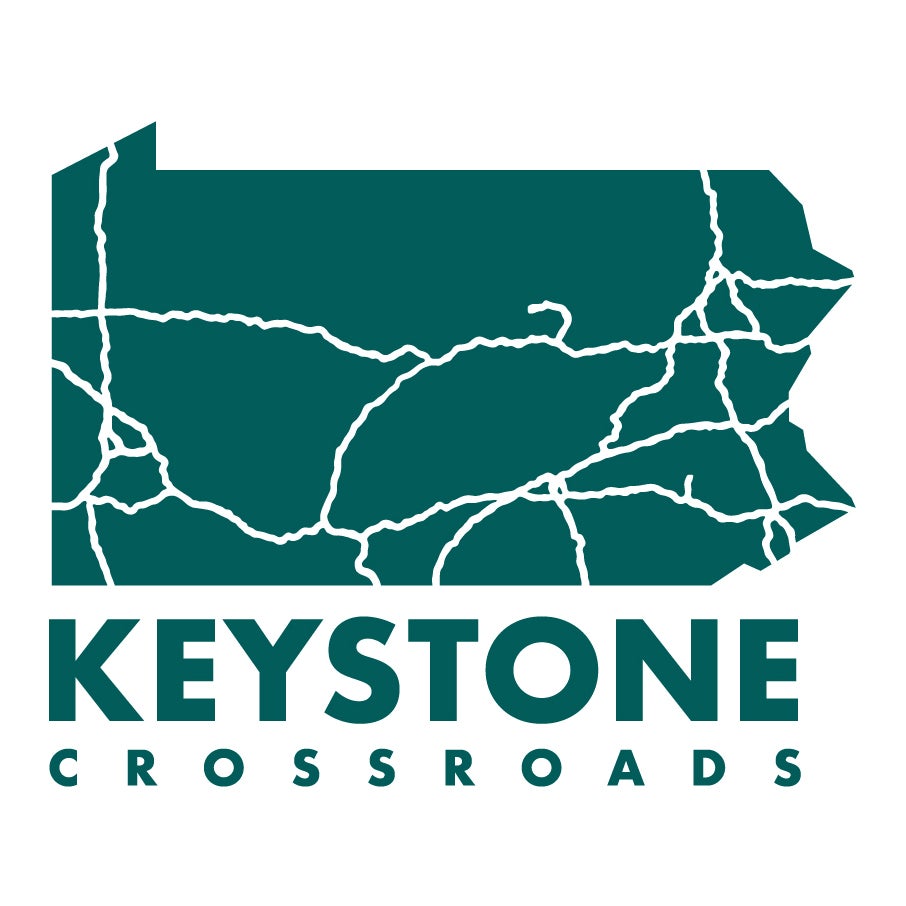
Get more Pennsylvania stories that matter
WHYY is your source for fact-based, in-depth journalism and information. As a nonprofit organization, we rely on financial support from readers like you. Please give today.




